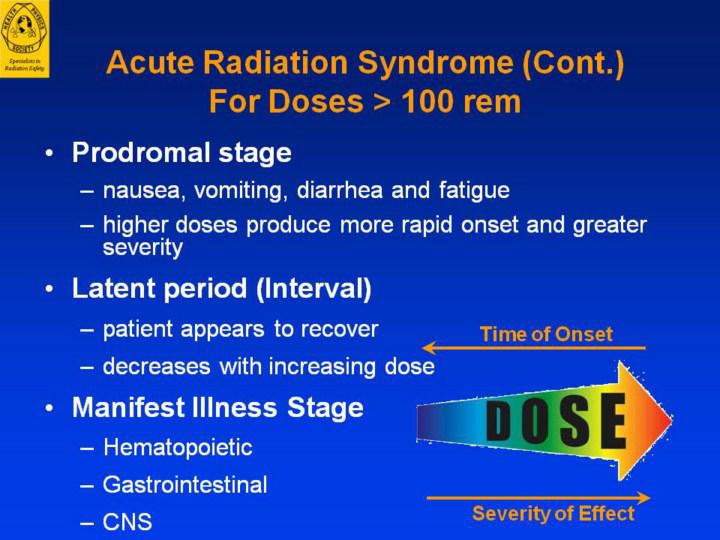| front |1 |2 |3 |4 |5 |6 |7 |8 |9 |10 |11 |12 |13 |14 |15 |16 |17 |18 |19 |20 |21 |22 |23 |24 |25 |26 |27 |28 |29 |30 |31 |32 |33 |34 |35 |36 |37 |38 |39 |40 |41 |42 |43 |44 |45 |46 |47 |48 |49 |50 |review |
 |
Acute Radiation Syndrome (Cont.)
•The
signs and symptoms that develop in the ARS occur in four distinct
phases: prodromal (initial), latent period, manifest illness stage and
recovery or death.
•Prodromal
phase.
Depending on the dose of radiation, patients may experience a variety of
symptoms including loss of appetite, nausea, vomiting, fatigue, and
diarrhea. After extremely high radiation doses, additional symptoms
such as prostration, fever, respiratory difficulties, and increased
excitability may develop.
•Latent
period.
This is a transitional period in which many of the initial symptoms
partially or completely resolve. It may last for a few hours or up to a
few weeks depending on the radiation dose. The latent period shortens
as the initial dose increases.
•Manifest
Illness Stage.
These three phases occur with increasing radiation exposure and are
described on the following slides.
•The
severity of the symptoms increases with dose, amount of the body exposed
(whole body vs. partial body exposure), and the penetrating ability of
the radiation. The severity is also affected by factors such as age,
gender, genetics, medical conditions, etc.
|